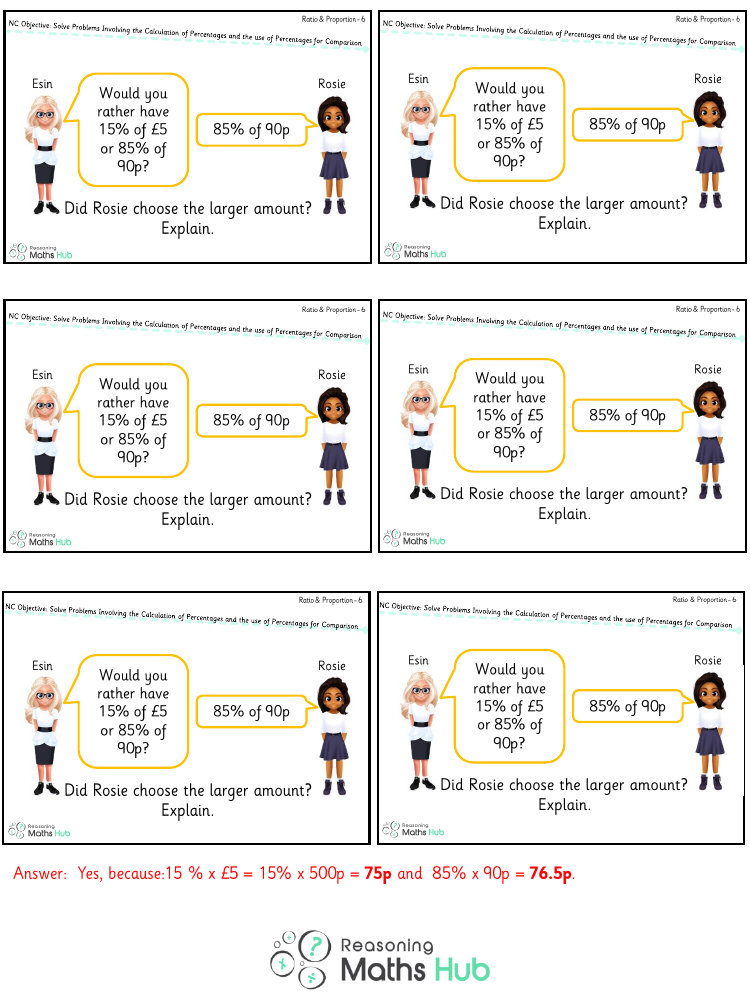Solve Problems Involving the Calculation of Percentages and the Use of Percentages for Comparison 3 - Reasoning

Maths Resource Description
When it comes to solving problems that involve the calculation of percentages, students are required to develop a strong foundation in understanding and applying percentage concepts. This includes being able to calculate percentages of quantities as well as using these percentages to make comparisons between different values. Reasoning skills are crucial as they enable students to interpret and solve more complex problems that may not be straightforward. For example, students may be tasked with determining the percentage increase or decrease in a given scenario, comparing discounts on products, or interpreting statistical data presented in percentages.
Effective reasoning in percentage problems often involves multiple steps: identifying the relevant information, converting percentages to fractions or decimals as necessary, performing calculations, and then interpreting the results in the context of the problem. For instance, when comparing discounts of 15% and 20% on different items, students must calculate the actual discount amounts, compare them, and reason which discount offers the greater savings. This skill set is not only fundamental for academic success in mathematics but also for real-life financial literacy, where understanding and using percentages is an everyday necessity.